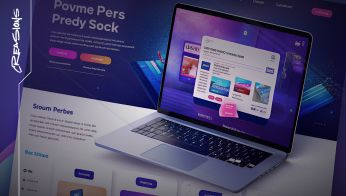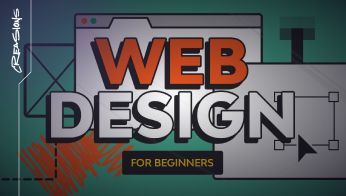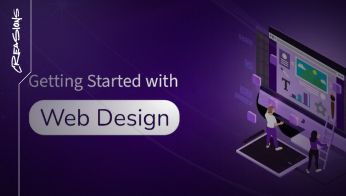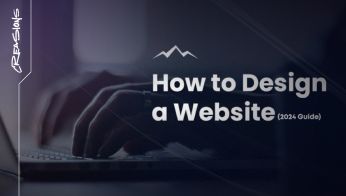Suppose you’re looking to pursue a career in web design or simply want to learn the skills necessary to build and manage websites. In that case, the United States offers a plethora of educational opportunities. From short online courses to comprehensive degree programs, there is something to fit every learning style and career goal. This guide will explore some of the top web design courses and programs available in the USA.
1. University Degree Programs
Many universities in the USA offer bachelor’s and master’s degree programs in web design, digital media, or interactive design. These programs provide a thorough education in web design principles, user experience (UX), graphic design, coding, and multimedia production.
Top Universities Offering Web Design Programs:
New York University (NYU) – School of Professional Studies
Program: Bachelor of Science in Digital Communications and Media
Overview: This program covers web design, digital storytelling, multimedia production, and social media strategy. Students gain hands-on experience in designing and developing websites and applications.
Savannah College of Art and Design (SCAD)
Program: Bachelor of Fine Arts (BFA) in User Experience (UX) Design
Overview: SCAD offers a BFA program focused on user experience and web design. The curriculum includes courses in web development, interface design, and user research, with opportunities for collaboration with major companies.
University of California, Los Angeles (UCLA) Extension
Program: Certificate in Web and UX Design
Overview: UCLA Extension provides a comprehensive certificate program that includes courses in HTML, CSS, JavaScript, UX/UI design, and responsive design. The program is suitable for beginners and professionals looking to update their skills.
2. Online Learning Platforms
For those who prefer flexibility, online courses offer a great way to learn web design at your own pace. Several platforms provide high-quality courses taught by industry professionals, ranging from introductory classes to advanced topics in web design.
Popular Online Learning Platforms for Web Design:
Coursera
Course: Web Design for Everybody: Basics of Web Development & Coding Specialization
Provider: University of Michigan
Overview: This specialization includes five courses that cover HTML5, CSS3, JavaScript, and responsive design. It’s designed for beginners and offers a certificate upon completion.
Udemy
Course: The Complete Web Developer Bootcamp
Instructor: Angela Yu
Overview: A comprehensive course that covers HTML, CSS, JavaScript, Node.js, React, and more. Suitable for beginners, it provides hands-on projects to help build a strong foundation in web design and development.
LinkedIn Learning
Course: Web Design Fundamentals
Instructor: James Williamson
Overview: This course introduces the basics of web design, including HTML, CSS, and visual design principles. It is ideal for beginners and offers a certificate that can be displayed on your LinkedIn profile.
edX
Course: Front-End Web Developer Professional Certificate
Provider: W3C (World Wide Web Consortium)
Overview: This professional certificate program includes multiple courses on HTML5, CSS, JavaScript, and responsive design, providing a thorough education in front-end web development.
3. Community Colleges and Technical Schools
Community colleges and technical schools offer affordable and practical education in web design. These programs are often more flexible and focus on the practical skills needed to enter the workforce quickly.
Notable Community Colleges and Technical Schools:
Full Sail University
Program: Associate of Science in Web Design and Development
Overview: This program provides hands-on training in HTML, CSS, JavaScript, and UX design. It also covers multimedia production and e-commerce.
Santa Monica College (SMC)
Program: Certificate of Achievement in Website Software Specialist
Overview: SMC offers a certificate program that includes courses in web design, digital media, and computer programming. It prepares students for entry-level positions in web design and development.
Houston Community College (HCC)
Program: Associate of Applied Science in Web Development and Design
Overview: HCC offers an associate degree focusing on both front-end and back-end web development. The curriculum includes HTML, CSS, JavaScript, PHP, and MySQL.
4. Bootcamps and Intensive Programs
Web design boot camps are intensive, short-term programs designed to teach web design and development skills quickly. These are ideal for those looking to transition into a tech career or upskill in a short amount of time.
Top Web Design Bootcamps:
General Assembly
Program: Front-End Web Development
Overview: This part-time course covers HTML, CSS, JavaScript, and responsive design. It’s suitable for beginners and offers practical experience through projects and portfolio development.
Flatiron School
Program: Software Engineering Immersive
Overview: While focused on software engineering, this bootcamp includes comprehensive web development training, covering front-end and back-end development with a focus on HTML, CSS, JavaScript, and Ruby on Rails.
Ironhack
Program: Web Development Bootcamp
Overview: Ironhack’s bootcamp covers HTML, CSS, JavaScript, React, Node.js, and MongoDB. It’s designed for beginners and career changers looking to enter the tech industry.
5. Self-Learning Resources and Books
For those who prefer self-study, there are plenty of books, tutorials, and online resources available to learn web design at your own pace. These materials can complement formal education or be a primary source for learning.
Recommended Books and Resources:
“HTML and CSS: Design and Build Websites” by Jon Duckett
A beginner-friendly book that introduces HTML and CSS with easy-to-follow visuals and examples.
“Don’t Make Me Think” by Steve Krug
A classic book on web usability that covers the principles of intuitive navigation and design.
MDN Web Docs
A comprehensive resource for web developers that covers HTML, CSS, JavaScript, and web APIs.
CSS-Tricks and Smashing Magazine
Online blogs that offer tutorials, articles, and guides on the latest trends and best practices in web design.
Wide-Up:
Whether you’re looking for a formal degree, a flexible online course, or a quick bootcamp, there are numerous options available in the USA to learn web design. Choose a path that aligns with your learning style, career goals, and budget. With dedication and practice, you can develop the skills needed to create effective and visually appealing websites, opening up a world of opportunities in the digital landscape.









